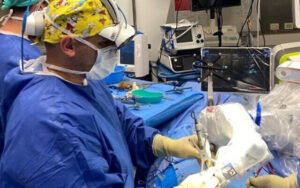The ritual of the red heifer, whose ashes are used to purify a person who has contracted impurity, relies heavily on symbolism and the meaning we attach to objects and concepts. An abstract concept represented by a physical object is brought closer to our senses and made easier to internalize and retain, and it is for that reason that all the elements of the red heifer ritual are deeply symbolic.
Knowing what we do today about the effect of death and violence on people and the need for a healthy process of grief, acknowledgement and coming to terms with tragedies, we must assume that the Torah, given to us by the Creator of the world, is aware of that need and addresses it. An encounter with death can leave us emotionally paralyzed. There are those who will become apathetic and indifferent, who will feel that there is no purpose for anything and will sink into depression and despair, and yet others who will conclude that there is no law or order in this world and since everyone is going to die they could do whatever they want, including wreaking havoc and harming others physically or emotionally.
These varied reactions to death, which impair our sensibility and our will to live and contribute to society, are viewed by the Torah as a spiritual and emotional contamination, and therefore fall under the rubric of impurity. The ritual of the red heifer was meant to help the mourner cope with the loss first by vindicating his pain and grief and then leading him on a path of acceptance and recovery, culminating in a resolution to take on life with renewed positive energy. The priest would not treat patients as numbers nor groups, but would rather take the time to talk to each candidate for purification and assist him with this biblical therapy.
At the end of the process, the mourner is pure and ready to go back to life, while the priest is rendered impure for one day as a result of his encounter with death’s aftermath, an encounter which depleted his reserves of spiritual energy.
One very significant stage is when the priest places the ashes in a bowl and pours water on it. This symbolizes that water, the power of life, can overcome the feeling of despair and hopelessness and help us start or pick up again a cycle of growth and development.
May God bless us with the ability to use the energy of life and hope to overcome all difficulties.
Shabbat Shalom
Rabbi Haim Ovadia



















One Response